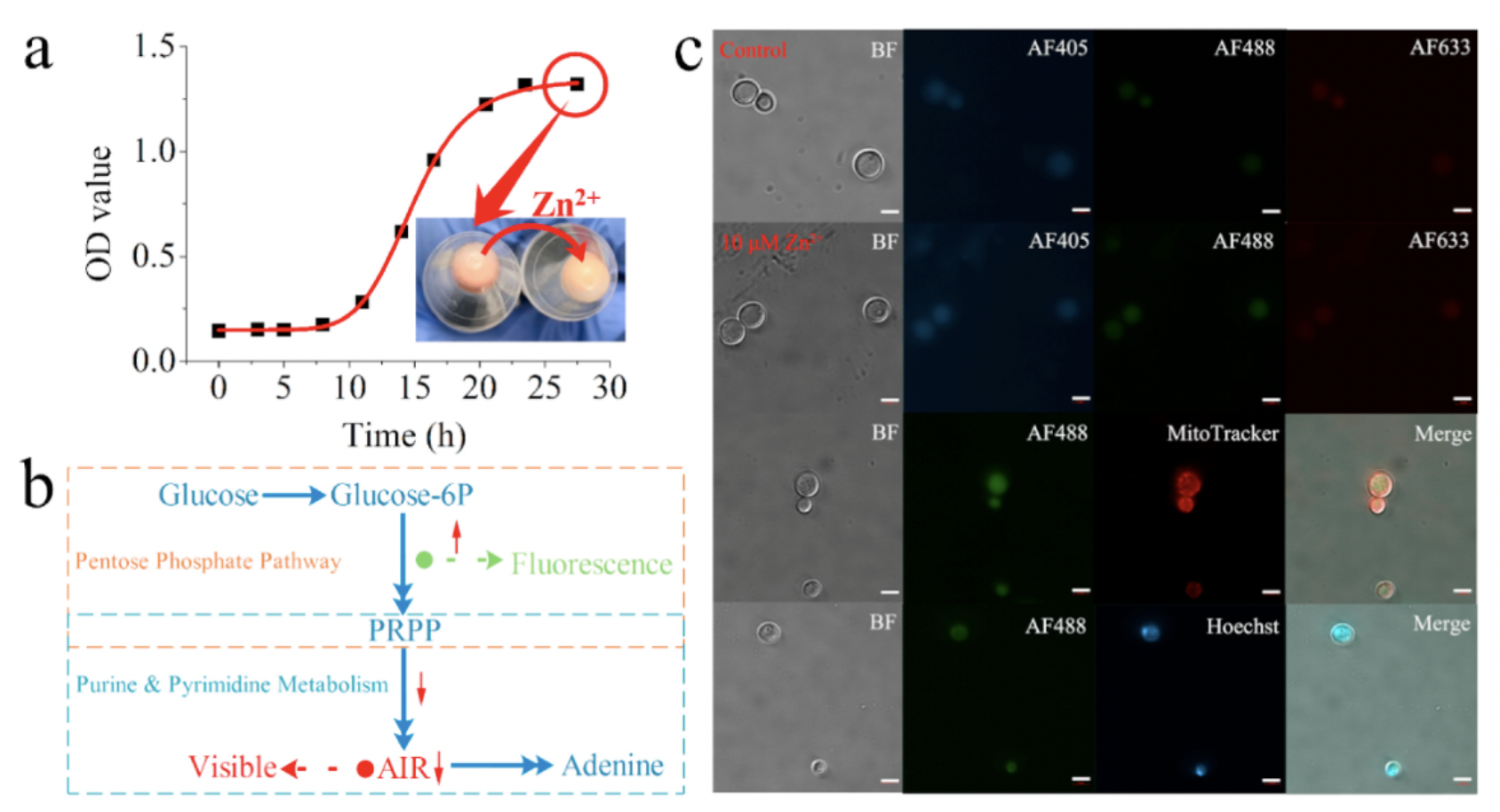A novel biosensor for detecting zinc (Zn) in ocean was established, based on the autofluorescence intensity of an adenine deficient yeast (Ade(-) yeast). This biosensor could detect Zn2+ at ultralow concentration (0.01 μM) and accurately quantify the extracellular concentration of Zn2+ ranging from 0.01 to 0.5μM. High tolerance of Ade(-) yeast to salinity, pH variation and other metals enabled its application in complex marine environments.

Zn2+ directed recession of red pigment in Ade(-) yeast. a, Growth curve of yeast W303 (in YPD broth, 30 ◦C, 200 rpm). b, Pathways involved in the production of adenine. c, Intracellular distribution of the overproduced fluorescence substance. Scale bar: 5 μm. (For interpretation of the references to color in this figure legend, the reader is referred to the Web version of this article.)
Sun, A., & Wang, W. X. (2021). Adenine deficient yeast: A fluorescent biosensor for the detection of Labile Zn(II) in aqueous solution. Biosensors & bioelectronics, 179, 113075. https://doi.org/10.1016/j.bios.2021.113075